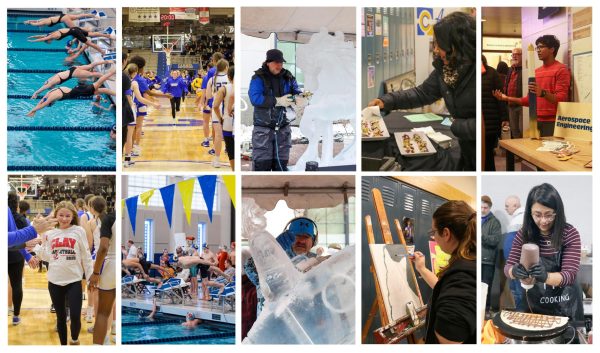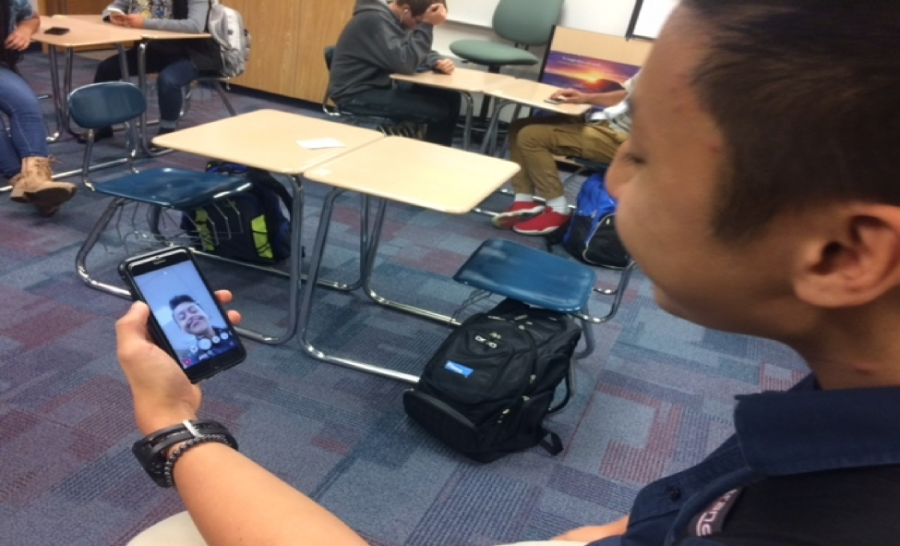CHS students believe that Snapchat unintentionally displays racism
More in Online Only
Ever since its release, Snapchat has continuously been one of the most popular social media outlets. Snapchat, unlike many other forms of social media, has a feature in which users can morph their faces into several different formations. However, despite Snapchat’s uniqueness, some of these formations are seen by many as racist. For example, junior Jerome Sendon, an active Snapchat user, believes that Snapchat does indeed include hints of racism.
“From my experience, I think that Snapchat filters do somewhat push western standards of beauty and try to make people look more Caucasian,” Sendon said. “I know some filters include face slimming and there’s even a flower filter, where they make your eyes wider and lighten your eye color.”
However, according to Sendon, he believes that while Snapchat does display racism, Snapchat’s racist actions are unintentional.
“I definitely see why people may classify Snapchat as racist but in the end, I don’t think Snapchat is trying to be hurtful or racist to anyone,” Sendon said. “I think they should just be more sensitive in their filters because I doubt Snapchat would try to promote racism.”
In similar views with Sendon, junior Joel Barrett, also an active Snapchat user, believes that there is visibility in Snapchat’s racism.
“I think the filters that Snapchat provides could promote people to view Snapchat as racist,” Barrett said. “The face morphing aspect of Snapchat can definitely mislead people.”
Barrett holds common belief with Sendon in that while Snapchat does display some form of racism, it is done unintentionally.
“While I do think that there are many things that people could interpret as racist, most of the time, I don’t believe the creators had racist intentions,” Barrett said. “In others words, I don’t think that anyone working for Snapchat is trying to cause any harm.”
Like Sendon and Barrett, CHS teacher Allison Malloy believes that the face-morphing aspect of Snapchat could be seen as racist in relation to its filters.
“Some of these filters on Snapchat are stereotypical and culturally insensitive in nature,” Malloy said. “For example, I know that they previously offered an anime filter which slants the eyes and turns the image more yellowish.”
In differing views with Barrett and Sendon however, Malloy believes that Snapchat does know to an extent that their filters display some sort of racism.
“I cannot imagine that the people of Snapchat wouldn’t know that what they are providing to users is racist,” Malloy said. “We can definitely celebrate diversity and other cultures without doing so in ways that belittle these cultures and unfortunately, for Snapchat, I don’t think they understand or are even aware of that line.”
Although Sendon does see the racist aspect of Snapchat, he still continues to be an avid user of Snapchat.
“While I do see Snapchat’s indication of racism as a very bad thing, overall, I don’t think these filters should be taken too seriously because in the end, Snapchat is just meant for fun.”
Your donation will support the student journalists of Carmel High School - IN. Your contribution will allow us to purchase equipment and cover our annual website hosting costs.

































![AI in films like "The Brutalist" is convenient, but shouldn’t take priority [opinion]](https://hilite.org/wp-content/uploads/2025/02/catherine-cover-1200x471.jpg)









































![Review: “The Immortal Soul Salvage Yard:” A criminally underrated poetry collection [MUSE]](https://hilite.org/wp-content/uploads/2025/03/71cju6TvqmL._AC_UF10001000_QL80_.jpg)
![Review: "Dog Man" is Unapologetically Chaotic [MUSE]](https://hilite.org/wp-content/uploads/2025/03/dogman-1200x700.jpg)
![Review: "Ne Zha 2": The WeChat family reunion I didn’t know I needed [MUSE]](https://hilite.org/wp-content/uploads/2025/03/unnamed-4.png)
![Review in Print: Maripaz Villar brings a delightfully unique style to the world of WEBTOON [MUSE]](https://hilite.org/wp-content/uploads/2023/12/maripazcover-1200x960.jpg)
![Review: “The Sword of Kaigen” is a masterpiece [MUSE]](https://hilite.org/wp-content/uploads/2023/11/Screenshot-2023-11-26-201051.png)
![Review: Gateron Oil Kings, great linear switches, okay price [MUSE]](https://hilite.org/wp-content/uploads/2023/11/Screenshot-2023-11-26-200553.png)
![Review: “A Haunting in Venice” is a significant improvement from other Agatha Christie adaptations [MUSE]](https://hilite.org/wp-content/uploads/2023/11/e7ee2938a6d422669771bce6d8088521.jpg)
![Review: A Thanksgiving story from elementary school, still just as interesting [MUSE]](https://hilite.org/wp-content/uploads/2023/11/Screenshot-2023-11-26-195514-987x1200.png)
![Review: "When I Fly Towards You", cute, uplifting youth drama [MUSE]](https://hilite.org/wp-content/uploads/2023/09/When-I-Fly-Towards-You-Chinese-drama.png)
![Postcards from Muse: Hawaii Travel Diary [MUSE]](https://hilite.org/wp-content/uploads/2023/09/My-project-1-1200x1200.jpg)
![Review: "Ladybug & Cat Noir: The Movie," departure from original show [MUSE]](https://hilite.org/wp-content/uploads/2023/09/Ladybug__Cat_Noir_-_The_Movie_poster.jpg)
![Review in Print: "Hidden Love" is the cute, uplifting drama everyone needs [MUSE]](https://hilite.org/wp-content/uploads/2023/09/hiddenlovecover-e1693597208225-1030x1200.png)
![Review in Print: "Heartstopper" is the heartwarming queer romance we all need [MUSE]](https://hilite.org/wp-content/uploads/2023/08/museheartstoppercover-1200x654.png)











